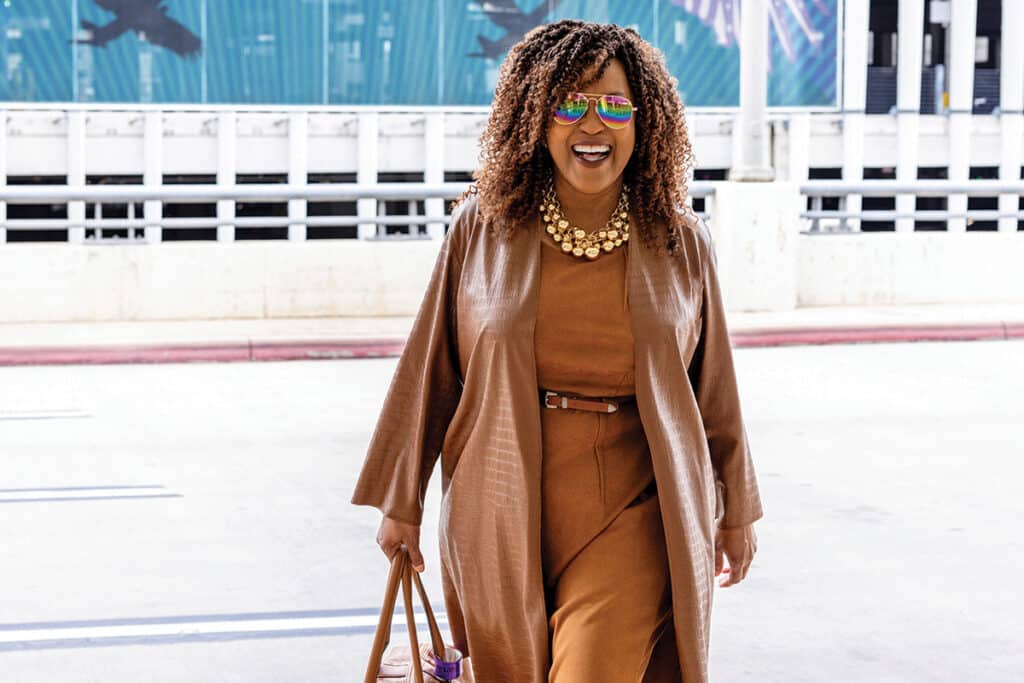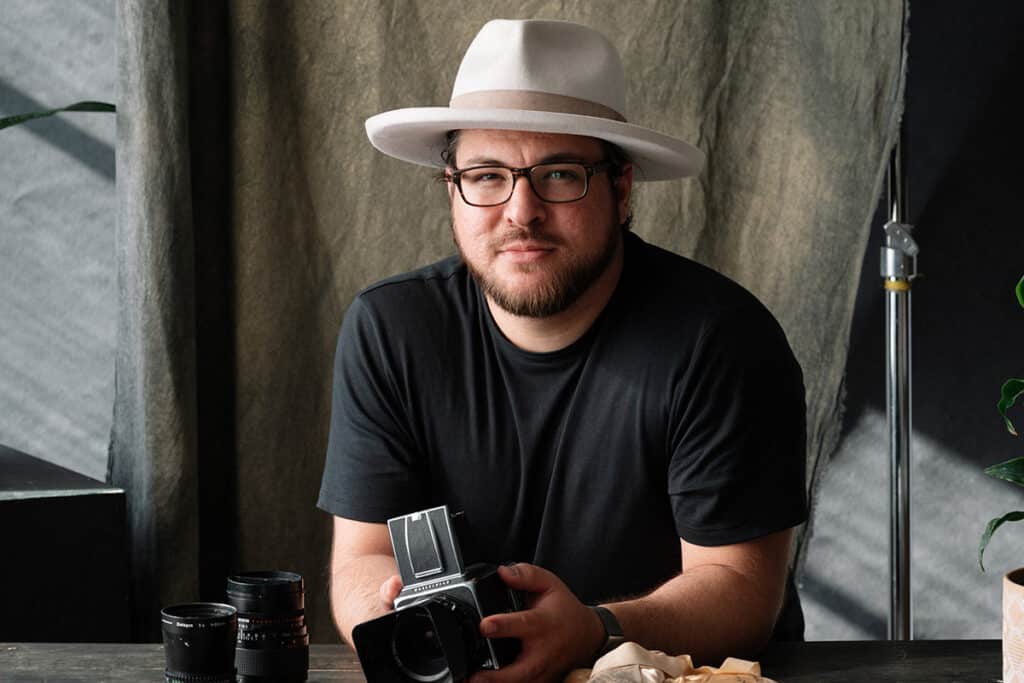After “start exercising” and “stop smoking/drinking/ overeating,” “get organized” is one of the most popular New Year’s resolutions. No wonder — organizing the chaos in your home or office can foster a sense of calm and control, save money and time and reduce stress and frustration levels.
According to a survey by the National Association of Professional Organizers (NAPO), 71 percent of respondents said their quality of life would improve by just getting organized — chances are you agree. Luckily, dozens of NAPO members work here in San Antonio. We’ll talk to four completely collected women, each with her own area of organizational expertise, and offer tips on getting at least one of your New Year’s resolutions off to the right start.
CYNTHIA CUNNINGHAM
According to Cynthia Cunningham, president of the local chapter of NAPO and owner of Absolute Organization, clutter is stressful because it is omnipresent: “Clutter is on your shoulders, weighing you down every minute of your life. It is subliminal, inescapable. I ask my clients, ‘What’s keeping you up at night?’ It’s often a disorganization issue they refuse to tackle.” Every time you defer cleaning out that closet, you allow the clutter to be a part of your life. The closet doesn’t go anywhere when you refuse to deal with it; instead it lingers like a bad smell you can’t corner.
We are, in fact, messier than ever. “There have been two reactions to the recession: hunker down or rabidly acquire,” notes Cunningham. Every clutter-minded person has a panicked response to the idea of scarcity, and with rising unemployment and creeping bills, people will either hoard every item they own or feel a desperate desire to fill up every space in order to feel secure. Major economic changes can cause even formerly good “editors” to deny heaps of disorder instead of dealing with them, mimicking a larger sense of losing control. If this is you, don’t be discouraged. Average Americans who call on the resources of a professional organizer are often deeply embarrassed, thinking — in isolation — that their personal circumstances must be beyond help. Nothing could be further from the truth. “Our clients are usually very intelligent, very creative people, with amazing talents. But organization is a learned trait. Almost everyone could use a true professional,” says Cunningham. Many professionals are equipped to handle larger organizational challenges such as ADD and ADHD as well.
As an industry expert, a professional organizer will be completely objective and unemotional. Without any of the drama we see on reality shows, it all comes down to whether you, the client, are willing to be held accountable. According to Cunningham, the ideal candidate for a home organization is someone who seriously wants to effect a change in their lives, not duplicate a magazine shoot or a television show. Your home or office is going to be the same square footage after organizing that it was before.
A piece of advice — don’t “clean up before the maid” by trying to pre-organize a room in advance of a consultation. It’s a disservice to both you and the professional. Lastly, says Cunningham, don’t “fear the purge.” She elaborates, “Our objective is to help you arrange your life so it can bring you pleasure.”
Cunningham specializes in family, play and children’s rooms — areas that are rapidly getting out of control. Toy overload is caused by a combination of “grandparents, advertising and technology,” she says. In addition to doting grandparents (and parents) and incessant advertising aimed directly at the littlest target markets, the introduction of a computer or video game station into play areas has resulted in rooms where toy placement has replaced furniture arrangements. “I’m not an advocate of including your child or children in the organizing process,” offers Cunningham. “Children aren’t mature enough to let go of items. Besides, parents already know what the child is really playing with.” There’s no need to throw everything away, either. You can easily “cycle” through a series of toys — edit down to the small number of toys your child is really engrossed in, donate anything outdated, toss anything unsafe and shelve the rest for a rainy day. “In this economy, there’s no need to spend money on new toys,” she advises.
Keeping kids’ rooms neat is a process, and Cunningham suggests the parent serve as an example. Children as young as 18 months can understand the concept of picking up a toy and placing it in a container. Be sure to pick up with them, especially at first, and be specific. Instead of “Pick up your room!” she recommends giving clear instructions such as “make your bed, put all of the stuffed animals on the bed, and put the books on the bookshelf and the video games in the TV drawer.”
JOAN KEARL
Joan Kearl, treasurer of the local chapter of NAPO and owner of Organized for Success, has been a student of organization for nearly 30 years. She has used this skill in large corporations, in her own marketing and advertising business, while running the schedules of high-profile CEOs and politicians, and, since 2001, as a professional organizer. Dovetailing with her extensive company background is her specialization in time management, business offices (both traditional and home), public speaking, relocations and work as a life coach. “I like solving the puzzle that organizing represents, as well as being able to motivate people to change their behaviors for the better,” she remarks. Over the years, she’s helped more than 130 different businesses and executives get organized. For her, corporate types are the ideal clients. According to Kearl, “Most businesspeople are motivated by either making or saving money. They are already achievement-oriented, want to be more productive and like to accomplish goals. And they like the accountability.” She’s happy to work with the more structured goals common to businesses, like increasing productivity or sales, or helping new managers make the transition from organizing products to organizing people.
Busy executives often have the perception that they are, in fact, the most disorganized person Kearl has ever worked with. They’re overwhelmed by all of the information they must review, process and store, and the steps they may have taken to try to get organized — say, buying a new filing system or some books on organization — only make them feel even farther from their goal. Like all clutter issues, a disorganized professional life has deep emotional ramifications, making even tough higher-ups feel embarrassed and uncomfortable. “People are afraid of the strict rules and regulations they’ve seen on TV,” says Kearl. “I try to share insights and observations instead, put them at ease. I give them permission to make progress over time and not feel they have to do it all at once.” At the end of a purge, she’ll even take out the trash or drop off the donations herself, making a difficult situation just a bit easier.
Kearl advises her clients to identify the “big rocks.” She explains, “Imagine you have a bucket and some sand, pebbles and big rocks to put inside it. If you put the sand and pebbles in first, the rocks won’t fit, but if you put the rocks in first, the sand and pebbles will tumble around and find their own place. The bucket is your day — figure out what you really must do and schedule it. The rest will fall into place.”
PAMELA HUGHES
After a decade of professional organization, Pam Hughes has identified a niche we can all relate to — the emotionally wrenching process of reviewing and editing our treasured mementos. Hughes found that while helping clients clean out homes and offices, she was most passionate about listening to their stories and wanted to find a way to help preserve them. Realizing this process deserved its own dedicated business, Hughes opened Preserve My Past. Whether as part of a downsizing or to commemorate an important milestone, professional aid can be necessary in even the most personal of family moments. “We’re objective,” Hughes notes. “Some people don’t have family close by or feel prejudged or even a bit intimidated by the idea of going through their keepsakes with close family. We can make it easier.” Finding the balance between keeping special memories vivid and alive and minimizing clutter is the key. “I ask my clients, Can you get to these things to show them off? Can you actually use them yourself? Do they take you to a joyful place in your past?” she says.
Hughes herself has a small green pitcher from her grandmother’s house. Her grandmother used it to pour milk over her cereal when she was a child. Of all of the wonderful items she might have ever inherited from or associated with her grandmother, this is the special “keeper” that preserves the memory and yet also allows her to move forward. Hughes is very specific about the preservation procedure. Clients begin with an eight-to nine-page questionnaire that helps them start to consolidate the photos, thoughts and stories they want to record. It includes a timeline, question prompts and spaces to describe their childhood and adulthood, often sending clients back in time to memories they had all but forgotten. “Clients will start calling friends and family they might not have spoken to in years, initially for help with the questionnaire, and it takes off from there — it’s wonderful to see them reconnect,” says Hughes.
She will then meet with the client to review 20 to 30 family photographs and record an informal audio interview to begin building a story line. “We look for the stories where their eyes light up — then you know you have the moment,” Hughes adds. She and her husband, a videographer and film editor, then schedule a casual video interview. This is later edited together with the still images, voice-over from the initial interview, even music — whatever works for the individual client. Keeping the family stories alive is such an important process, Hughes has begun teaching classes and workshops specifically on the topic. She’s taught basic organizational workshops for years, so this was a natural extension. “Classes are a great place to dip your toe in, just to get started,” she advises. You can even schedule story-gathering events for groups in your own home, or join ongoing story-gathering circles with like-minded friends.
FRANCES BOOKER
Another local organizer, Frances Booker, works specifically with seniors as well. A member of the National Association of Senior Move Managers and owner of Effortless Moves in Boerne, she specializes in helping seniors downsize from homes into smaller apartments, assisted living and retirement homes. “Someone will have lived in a family home for 20, even 30, years and need to move to a one-bedroom apartment. The loss of square footage is very stressful emotionally. Moreover, the contents of the house are a summation of their life,” she says. She may start by taking photos of the new floor plan and helping arrange furniture, and move on to helping pack, sort and dispose of or move the home’s contents, to refer clients to specialists like elder lawyers, realtors, charities, antique dealers and handymen. Effortless Moves also offers estate dispersion in the event of a loved one’s passing. Sifting through a lifetime’s worth of objects — clothes, furniture, photos, utensils — can be daunting. Booker tells people, “It’s not worth passing down a thing if it doesn’t also have a story.” If the family member getting the item doesn’t know why it’s important, it has no value to them. By connecting the memory to the object, clients can slowly begin to see that it isn’t the item itself that needs preserving, just the story. She advises them to go in phases and have realistic expectations. “Since they’ve worked so hard and likely paid top dollar, it can be heartbreaking to see their disappointment when they begin to sell their collectibles,” she says. Booker can coordinate estate sales, eBay auctions and other consignment opportunities for clients, but notes it can be very distressing for the client not only to have to part with an item, but to receive so little return on a perceived investment.
Booker appreciates that her clients are mostly children of the Great Depression and fiscally conservative. She offers free consultations and sets budgets up front. They may also have significant health limitations, and she is able to tailor her recommendations to support that. “People, especially seniors, can have a hard time reaching out for help,” she says. They think it will be too expensive or too time-consuming or that the organizer will be ruthless with editing their possessions. Her advice: Have confidence — this simply isn’t the case in today’s world of professional organization.
HANDY TIPS
FOR THE NEW YEAR FROM OUR PROFESSIONAL ORGANIZERS:
• Be a user, not a storer. For every new item you keep, get rid of an old one, and actually USE the new things you’ve received.
• Women are often the “keepers of the flame,” holding on to crafts, art projects, files, papers and memorabilia — ostensibly for other family members. Ask yourself, am I hanging on to this for me or for them? Do they even want or need this object?
• Post-holiday shopping: Use those gift cards soon. New regulations mean they lose value sitting in a drawer. Also, know the full value of items you return. If you have a blank gift receipt, you might get paid the after-holidays sale price instead of the full value paid by the giver.
• Prepare for next year now: Clean your china, linens and silver so it will be ready to go the next time you need it, freeing up time to spend with your family and friends. Keep all of your ribbon, wrapping paper and “regifts” (labeled, of course!) in one place.
• Going back to the office: Decide to process paperwork starting fresh in January — not the three- to six month-old stuff. Make a commitment to address anything you can deal with in two minutes or less.
• Think of your priorities. Schedule your family, friends and interests in ahead of time, even before your work commitments. Know what’s really important versus what’s just urgent.
• For those 100 new digital photos from the holidays: Delete the fuzzy, not-so-great ones before you even begin. Drop the remaining new pictures into the box or the folder on your computer by month and work from there to organize them into stories, categories or files.
• Start small and stay with it: Find an area that needs organization — old photos, the kitchen junk drawer, a box of loose papers to be sorted and filed. Schedule time once a week to work on this project, and stay committed. You’ll be surprised how far you’ll get!




